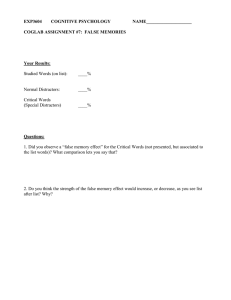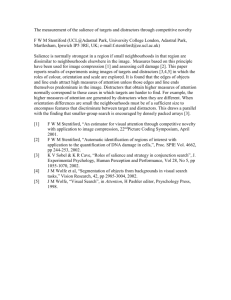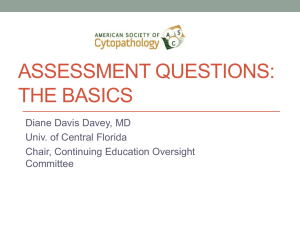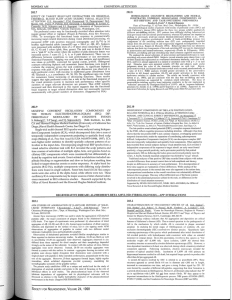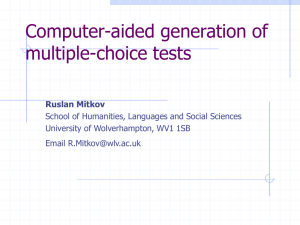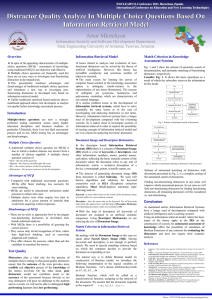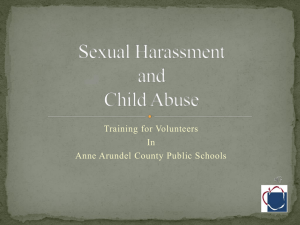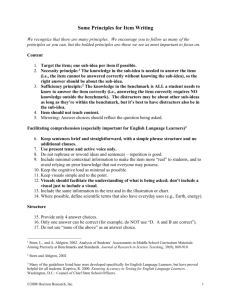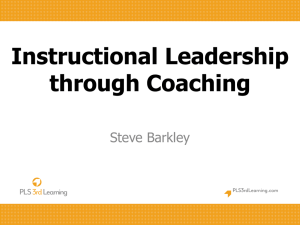Improving Attention Skills Presdentation - Brain
advertisement
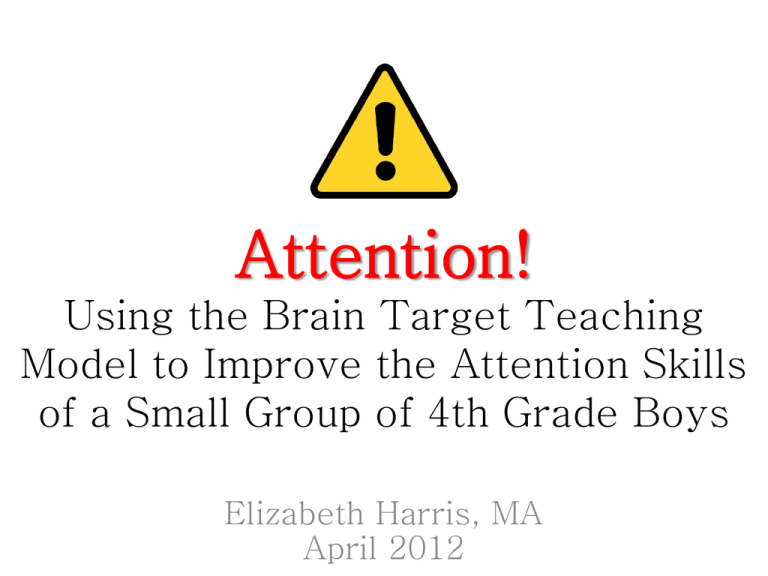
Attention! Using the Brain Target Teaching Model to Improve the Attention Skills of a Small Group of 4th Grade Boys Elizabeth Harris, MA April 2012 Learning Unit Objectives • Group members will: – Identify behaviors that demonstrate on task and off task behaviors – Understand the effects paying attention has on their learning and emotions – Identify potential distractors that may draw them off task – Learn strategies to stay on task and how to apply them BT-1 Setting the Emotional Climate for Optimal Learning • Group Routine – The group meets at the same time and location each week – Relaxation Activity • Group begins with a few moments of quiet relaxation time using focused breathing, stretching, or muscle relaxation activities – Group Community • Rules for the group, group goals, and a group name were developed by students during the first session and are reviewed each session – Week in Review • • During each group students share a situation in which they needed to pay attention Students share if they demonstrated on or off task behaviors, strategies they used to stay on task, and feelings they had regarding the experience – Learning Activity • • Students participate in a different activity each week focused on different learning objectives Group Dynamics...Group Leaders: – – – Provide positive feedback for respectful, productive, and attentive behavior Remain calm when the energy level escalates to model self-control and settle the group Respond to inappropriate behavior with firm but sensitive reminders of rules and consequences BT-2 Creating the Physical Learning Environment Environmental elements that enhance the learning environment Environmental elements that detract from the learning environment • • • • • • Group leaders place chairs in a semi-circle to facilitate group discussion Group leaders hang posters representing different strategies for managing attention in sight of group Group leaders eliminate visual distractions As the group arrives, leaders play relaxation music and spray a lavender scent in the room to promote relaxation Leaders have posted group rules and in sight of the group • • Borrowed space limits what group leaders can do to decorate and personalize it Students have limited personal space to move around in and have no space to personalize Students come to the group from recess at the end of the day and are VERY energetic, adding physical energy to the small space BT-3 Attention Concept Map Behaviors On Task Learning Off Task Effects Learning Effects Emotional Emotional Attention Distractors External Internal Strategies BT-4 Teaching for Mastery of Skills and Concepts • Activity 1: Students learn which behaviors show they are paying attention or not – Students brainstorm behaviors that demonstrate being on task or off task – Group leader lists behaviors on a T-chart on the board • Activity 2: Identify the effect paying attention has on learning and emotions: – Students create a drawing or comic depicting a situation when they’ve been able to stay on task on one side, and when they had difficulty staying on task on the other – Students then add feelings associated with that situation to their work • Group leader provides materials such as stamps or feeling faces for embellishment – Students present their work to the group and discuss: • • • • • Similarities and differences between their experiences Specific distractors Ideas about why they think paying attention is important What they learned from paying attention How they feel when they pay attention – Group leaders direct discussion regarding coping strategies to stay on task using leading questions such as • • • “What could he have done...? “ “What would you do...?” “What seemed to help...?” BT-5 Teaching for Extension and Application • Activity 3: Students use role playing to identify distractors that lead them to lose focus, and discussion to learn strategies for staying on task – Students break up into to three small groups – Each group randomly chooses a situation that depicts a school, home, or extracurricular activity similar to those identified in Activity 2 that requires their attention – Students assign the following roles: • • • One person attempts to stay on task One person tries to teach or direct him Two others act as distractors. – The group makes up the lines, distractors, and how a person reacts to the distractors – Each group presents its scenario to the group at large – The group leader leads brainstorming to generate strategies to stay on task and lists them on board • Activity 4: Students develop a Self-Monitoring strategy – Students brainstormed ideas for designing a cue card, then made their card to tape to their desk as a reminder to stay on task – Students in the current group chose a target or on/off light switch BT-6 Evaluating Learning • Activity 5: Students complete a project to demonstrate their understanding of learning objectives – Students will be given a chose to create a comic or write a story depicting a scenario in which the main character is in a situation requiring their attention – Student will be required to identify what distracts or potentially distracts the main character – Students will be asked to identify three strategies the main character applies to stay on task – Students will be asked to include how the character benefited, or what the main character learned by staying on task – The group leader will use a rubric to score students’ project • Other assessment options – Observations by group leader and self-report from members during group discussions – Pre- & Post Self-Assessment and Teacher Assessment • Current group and their teachers have completed an informal pre-assessment questionnaire and will complete post-assessments at the completion of the group
